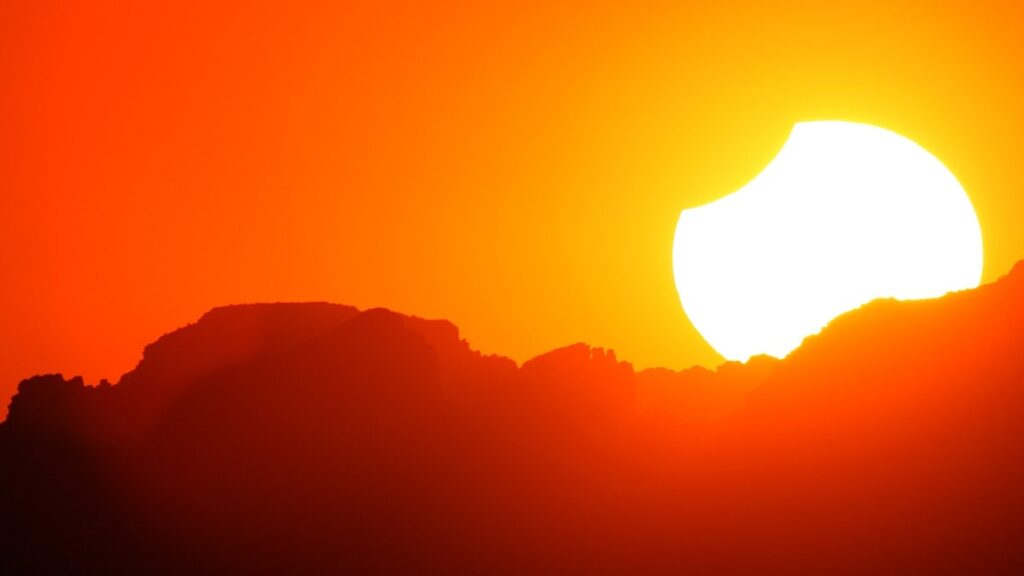[ad_1]
For the first time since May 2012, the U.S. will see a “ring of fire” eclipse in October.
The next annular eclipse — when the moon passes between the sun and the Earth, but when it is at or near its farthest point from Earth – will occur on Saturday, Oct. 14.
Because the moon is farther away from Earth, it appears smaller than the sun and does not completely cover it, according to NASA, resulting in it appearing as a dark disk on top of a large, bright disk – creating what appears to be a ring around the moon.
The eclipse will be visible in parts of the U.S., Mexico and many countries in South and Central America.
WEBB REVEALS COLORS, FEATURES OF MOST DISTANT STAR EVER DETECTED

The first annular eclipse seen in the U.S. since 1994 wanes to a partial eclipse as the sun sets on May 20, 2012, in Grand Canyon National Park, Arizona. Differing from a total solar eclipse, the moon in an annular eclipse appears too small to cover the sun completely, leaving a ring of fire effect around the moon. The eclipse is casting a shallow path crossing the West from west Texas to Oregon then arcing across the Northern Pacific Ocean to Tokyo. (David McNew/Getty Images)
In the U.S., the event begins in Oregon at 9:13 a.m. PDT and ends in Texas at 12:03 p.m. CDT. Oregon and Texas will experience a 90% eclipse of the sun.
Weather permitting, this annular solar eclipse will be visible in multiple states – including Oregon, Nevada, Utah, New Mexico, Idaho, Colorado, Arizona and some parts of California – and a partial solar eclipse will be visible in all 49 continental states, including Alaska.
NASA SAYS JULY WAS HOTTEST MONTH ON RECORD SINCE 1880

A partial annular solar eclipse is seen from the coast of Xiamen, in China’s southeast province of Fujian on May 21, 2012. Millions turned their eyes to the sky on both sides of the Pacific as a solar eclipse created a “ring of fire” from Asia to the western United States. (AFP/AFP/Getty Images)
As the sun is never entirely blocked by the moon during an annular solar eclipse, it is never safe to look directly at the sun during the eclipse without specialized eye protection for solar viewing.
Skywatchers can also use a method for indirect viewing, such as a pinhole projector.
“For NASA, this eclipse provides a unique opportunity to study the Sun, using this eclipse as a way to test and prepare scientific equipment for the total solar eclipse in April 2024,” the agency said on its website. “NASA will also launch sounding rockets during the eclipse to study changes in the atmosphere.”

Ring-tailed lemurs look on as children view a solar eclipse at the Japan Monkey Center in Inuyama city in Aichi prefecture, central Japan on May 21, 2012. Millions turned their eyes to the sky on both sides of the Pacific to gaze excitedly as a solar eclipse created a “ring of fire” at dawn in Asia and crept toward a darkening western U.S. (JIJI PRESS/JIJI PRESS/AFP via Getty Images)
CLICK HERE TO GET THE FOX NEWS APP
There will be a live broadcast of the eclipse from 10:30 a.m. to 12:15 p.m. CDT on NASA TV.
Notably, a total solar eclipse will occur on April 8, 2024, in Mexico, the U.S. and Canada.
[ad_2]
Source link







